稀有金属 2014,38(05),774-779 DOI:10.13373/j.cnki.cjrm.2014.05.006
三级均匀化对7050铝合金微观组织和性能的影响
贾品峰 曹以恒 何立子 崔建忠
东北大学材料电磁过程研究教育部重点实验室
摘 要:
采用硬度计、电导率测试仪、示差扫描量热分析仪 (DSC) 、X射线衍射仪 (XRD) 、扫描电子显微镜 (SEM) 和能谱仪 (EDS) 分析了不同均匀化条件下7050铝合金的组织演变规律和性能变化。结果表明:经465℃均匀化48 h后, T (AlZnMgCu) 相已经完全转化为S (Al2CuMg) 相, 残余相面积分数由铸态4.7%减少到0.8%, 硬度提高到HV190, 电导率减少为28.9 IACS%;经465℃/48 h+485℃/13 h均匀化后, 残余相面积分数减少到0.36%, 硬度提高到HV205.1, 电导率减少为27.6 IACS%, S相完全溶入基体;在465℃/48 h+485℃/24 h+500℃/11 h三级均匀化过程中, 合金没有发生过烧, 残余相面积分数为0.31%, 硬度为HV206.6, 电导率为27.3 IACS%。
关键词:
三级均匀化;7050铝合金;微观组织;
中图分类号: TG146.21
作者简介:贾品峰 (1981-) , 男, 辽宁鞍山人, 博士研究生, 研究方向:铝合金热处理;E-mail:jpf-635@163.com;;崔建忠, 教授;电话:024-83681738;E-mail:jzcui@epm.neu.edu.cn;
收稿日期:2014-04-14
基金:国家科技部“973”计划项目 (2012CB723307) 资助;
Microstructure and Properties of 7050 Aluminum Alloy with Three-Step Homogenization
Jia Pinfeng Cao Yiheng He Lizi Cui Jianzhong
Key Laboratory of Electromagnetic Processing of Materials, Ministry of Education, Northeastern University
Abstract:
The microstructure evolution, property change and composition distribution of 7050 aluminum alloy during different homogenizations were investigated by hardness test, conductivity test, differential scanning calorimetry ( DSC) , X-ray diffraction ( XRD) , scanning electron microscopy ( SEM) and energy dispersive spectrometry ( EDS) . The results showed that T phase transformed to S phase completely after homogenizing for 48 h at 465 ℃, the area fraction of the residual secondary phase reduced from 4. 7% to0. 8%, the hardness increased to HV190, and the conductivity reduced to 28. 9 IACS%; S phase dissolved into matrix fully after homogenizing at 465 ℃ for 48 h and 485 ℃ for 13 h, the area fraction reduced to 0. 36%, the hardness increased to HV205. 1, and the conductivity reduced to 27. 6 IACS%; during 465 ℃ /48 h +485 ℃ /24 h +500 ℃ /11 h three-step homogenization, no over-burning occurred to the alloy, the area fraction of residual phase reduced to 0. 31%, the hardness increased to HV206. 6, and the conductivity reduced to 27. 3 IACS%.
Keyword:
three-step homogenization; 7050 aluminum alloy; microstructure;
Received: 2014-04-14
7050铝合金是Al-Zn-Mg-Cu系可热处理强化的高强铝合金, 具有韧性好、疲劳强度高、淬透性好及抗应力腐蚀能力强等优良综合性能, 是航空领域重要的结构材料之一[1,2]。由于该合金具有较高的m (Zn) /m (Mg) , m (Cu) /m (Mg) , 未溶入基体的Zn, Mg, Cu元素在晶界处形成了大量的非平衡第二相, 可经过均匀化处理将其消除[3,4]。通常在Al-Zn-Mg-Cu合金中主要的第二相为η (MgZn2) , T (Al2Mg3Zn3) , T (Al32 (Mg Zn) 49) , M (Mg (Zn2Al Cu) ) , S (Al2Mg Cu) 和A17Cu2Fe[5,6,7]。一般常规单级均匀化可使低熔点共晶相完全溶解, 但合金中仍残存一定量的第二相, 如果继续加热, 合金会产生过烧。为了使合金中的残余相充分溶入基体, 需要采用双级以及介于非平衡固相线温度和平衡固相线温度的高温均匀化处理[8,9,10,11]。张新明[12]通过对7055铝合金进行468℃/24 h+473℃/4 h均匀化处理后, 发现在单级均匀化温度增加到473℃的短时保温阶段, 可以提高基体中溶质原子的固溶度, 增强时效强化效果, 提高合金的综合性能。Deng等[13]发现, 7050铝合金经400℃/10 h+473℃/24 h+485℃/4 h均匀化后, S (Al2Mg Cu) 相充分地溶入基体。
大量研究结果表明, 在均匀化过程中, 提高均匀化温度可有效的促进非平衡共晶相的溶解, 而采用均匀化温度高于485℃的多级均匀化工艺, 目前相关报道较少。本文主要研究了在三级均匀化过程中合金微观组织及性能变化规律, 为改善7050铝合金热处理工艺提供理论依据。
1 实验
实验所用材料为7050铝合金Φ160 mm铸锭, 合金成分 (%, 质量分数) Si 0.04, Fe 0.06, Cu2.24, Mn<0.05, Mg 2.22, Cr<0.04, Ni<0.05, Zn 6.40, Ti 0.015, Zr 0.11, Al余量。试样尺寸为15 mm×15 mm×15 mm, 试样在多段可控加热电阻炉内进行均匀化退火, 控温精度为±3℃, 升温速率为5℃·min-1, 均匀化工艺为:465℃/ (2, 24, 48 h) , 465℃/48 h+485℃/1 h, 465℃/48 h+485℃/13 h, 465℃/48 h+485℃/24 h, 465℃/48 h+485℃/24 h+500℃/11 h, 退火后空冷。
采用SSX-550型扫描电镜及附带的能谱仪进行显微组织观察及相成分分析, X射线衍射仪的型号为PW3040/60, 采用STA 449型热分析仪研究均匀化处理过程的相转变规律, 升温速率为5℃·min-1, 从室温加热至600℃。采用Fischer公司生产的Sigmascope型电导仪, 进行电导率测定。采用HRV-5型数显维氏硬度计测试合金的硬度, 载荷为50 N, 保荷时间为15 s。
2 结果与讨论
2.1 DSC分析
由图1可看出, 7050铝合金铸态组织在476.72和488.70℃存在明显的吸热峰, 476.72℃为T (Al Zn Mg Cu) 相熔点, 488.70℃为S (Al2Cu Mg) 初生相熔点。经465℃均匀化2 h后, DSC曲线上对应476.72℃的吸热峰消失, 488.70℃处的吸热峰迁移至493.61℃处, 说明大部分低熔点相已经溶解或转化为其他相。经465℃均匀化48 h后, 493.61℃处吸热峰面积减少, 说明经465℃均匀化48 h条件下, 不能使Al2Mg Cu相完全溶解, 必须提高均匀化温度以促进其进一步向基体溶解。经双级均匀化1 h后, 在493.61℃处吸热峰仍存在一定的面积, 说明基体中仍有未溶解的S相。在双级均匀化24 h后, DSC曲线变成波荡的锯齿状, 曲线上493.61℃处S相的熔化峰完全消失, 说明此时S相已全部溶于基体。经三级均匀化处理后, 没有明显的吸热峰, S (Al2Cu Mg) 相已充分溶于基体。
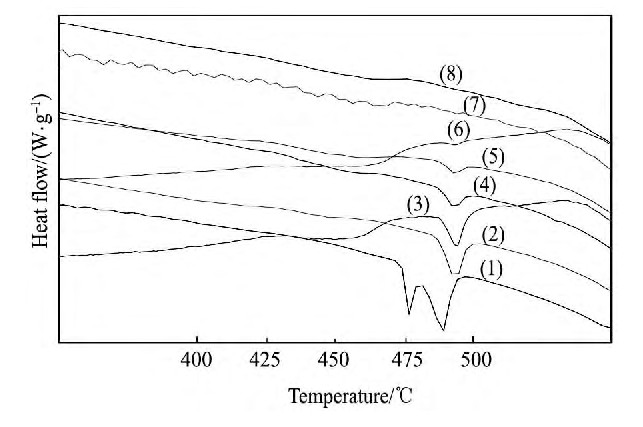
图1 7050铝合金铸态及不同均匀化状态的DSC曲线Fig.1 DSC curves of as-cast and homogenized 7050 aluminum alloy
(1) As-cast; (2) 465℃/2 h; (3) 465℃/24 h; (4) 465℃/48 h; (5) 465℃/48 h+485℃/1 h; (6) 465℃/48 h+485℃/13 h; (7) 465℃/48 h+485℃/24 h; (8) 465℃/48 h+485℃/24 h+500℃/11 h
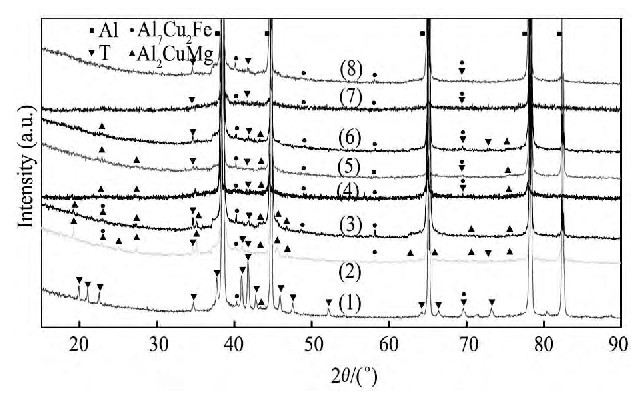
图2 7050铝合金铸态及不同均匀化条件下的X射线衍射谱Fig.2 XRD patterns of as-cast and different homogenized 7050aluminum alloys
(1) As-cast; (2) 465℃/2 h; (3) 465℃/24 h; (4) 465℃/48 h; (5) 465℃/48 h+485℃/1 h; (6) 465℃/48 h+485℃/13 h; (7) 465℃/48 h+485℃/24 h; (8) 465℃/48 h+485℃/24 h+500℃/11 h
2.2 XRD分析
由图2可见, 7050铝合金铸态组织中主要的第二相为T (Al Zn Mg Cu) 相[14], S (Al2Cu Mg) 相和Al7Cu2Fe相。经465℃均匀化2 h后, 合金组织中出现S (Al2Cu Mg) 相衍射峰, 同时T相衍射峰的强度和数量明显减小。随均匀化时间的延长, T和S相总体衍射强度均呈减小趋势, 表明在均匀化过程中, T相逐渐溶于基体或转化成部分Al2Cu Mg相[15], Al2Cu Mg相在不断生成的同时, 也逐渐向基体溶解。经465℃/48 h+485℃/24 h双级均匀化处理后, S相衍射峰基本消失, 表明S相已经完全溶于基体。经465℃/48 h+485℃/24 h+500℃/11 h三级均匀化处理后, S (Al2Cu Mg) 相完全消失, 表明7050铝合金的均匀化已进行得很充分, 由于合金在冷却过程中, 会有少量Mg Zn2相析出, 故在三级均匀化后, 会出现Mg Zn2相衍射峰。Al7Cu2Fe相由于熔点高, 在均匀化处理过程中基本不发生溶解, 仍以非平衡第二相的形式存在于基体中。
2.3 微观组织分析
由图3可以看出, 在合金铸态组织中, 晶界和枝晶之间存在大量连续网状分布的第二相。经465℃均匀化24 h后, 枝晶网络变稀, 残余相面积分数由铸态的4.7%减少到1.56%。经465℃均匀化48 h后, 枝晶网断续, 并开始球化, 呈链状分布在晶界处, 残余相面积分数减少到0.8%。当均匀化温度升到485℃后, 第二相在1 h内迅速向基体溶解, 大部分共晶网已经消失, 剩余的少量共晶网变得很细, 共晶网的网状结构已不十分明显, 第二相显著减少, 组织中第二相球化断续现象也越发明显, 残余相面积分数减少到0.58%, 经双级均匀化24 h后, 面积分数减少到0.36%。经三级均匀化后, 合金没有发生过烧现象, 组织中的共晶网全部消失, 只残留极少量孤立的残余相, 残余相面积分数减少到0.31%。
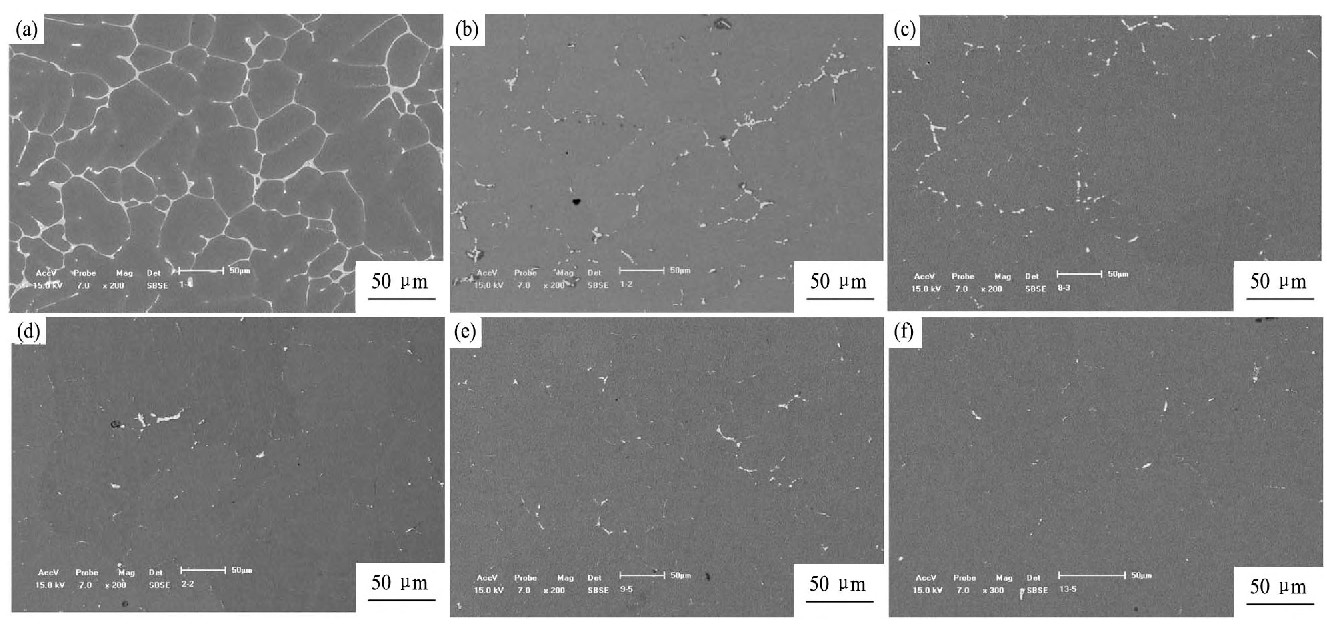
图3 7050铝合金铸态组织及经不同均匀化处理后的组织形貌Fig.3 SEM images of as-cast and homogenized 7050 aluminum alloys
(a) As-cast; (b) 465℃/24 h; (c) 465℃/48 h; (d) 465℃/48 h+485℃/1 h; (e) 465℃/48 h+485℃/24 h; (f) 465℃/48 h+485℃/24 h+500℃/11 h
图4为7050铝合金铸态及不同均匀化后的高倍组织照片, 能谱分析结果如表1所示。由图4可见, 7050铝合金铸态组织中主要相为T (Al Zn Mg Cu) 相:成分 (%, 质量分数) Cu 20.8, Mg 12.2, Zn25, Al 42;S (Al2Cu Mg) 相:成分 (%, 质量分数) Cu 39.7, Mg 15, Zn 3.3, Al 42.1。经465℃均匀化24 h后, 合金中T相已经完全转化为S相 (能谱点5) 。合金经465℃/48 h+485℃/1 h双级均匀化后, 合金中残余成分 (%, 质量分数) 为Fe4.1, Cu 27.3, Al 66.4的Al7Cu2Fe相。经三级均匀化后, 可以看到基体中残留极少量孤立的Al7Cu2Fe相, Al7Cu2Fe相边缘球化, 有利于塑性加工。
表1 图4中各点的能谱分析结果 (%, 质量分数) Table 1Chemical compositions of secondary phases in Fig.4 by EDS analysis (%, mass fraction) 下载原图
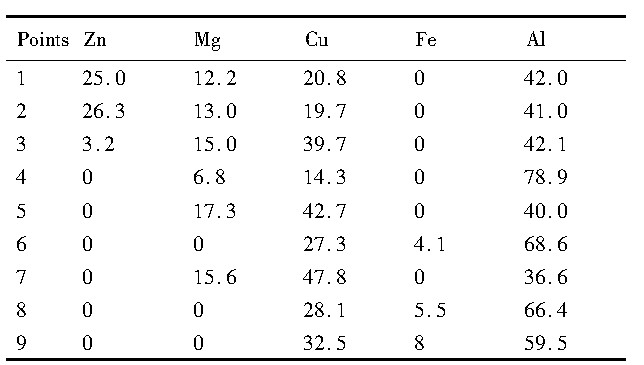
表1 图4中各点的能谱分析结果 (%, 质量分数) Table 1Chemical compositions of secondary phases in Fig.4 by EDS analysis (%, mass fraction)
2.4 硬度与电导率的变化
由图5可看出, 合金经465℃均匀化2 h后, 电导率由铸态43.4 IACS%降低到29.8 IACS%, 硬度由铸态HV81.7提高到HV171.2。经双级均匀化1 h后, 电导率降到28.4 IACS%, 硬度提高到HV193。经三级均匀化11 h后, 电导率和硬度趋于稳定, 为27.3 IACS%和HV206.6。多组元合金电导率主要受合金元素在铝基体中固溶度变化的影响, 随着均匀化温度的升高, 合金元素在Al基体中的固溶度升高, 所以合金经均匀化后, 会随着均匀化温度的升高, 均匀化时间的延长, 电导率下降, 硬度升高。
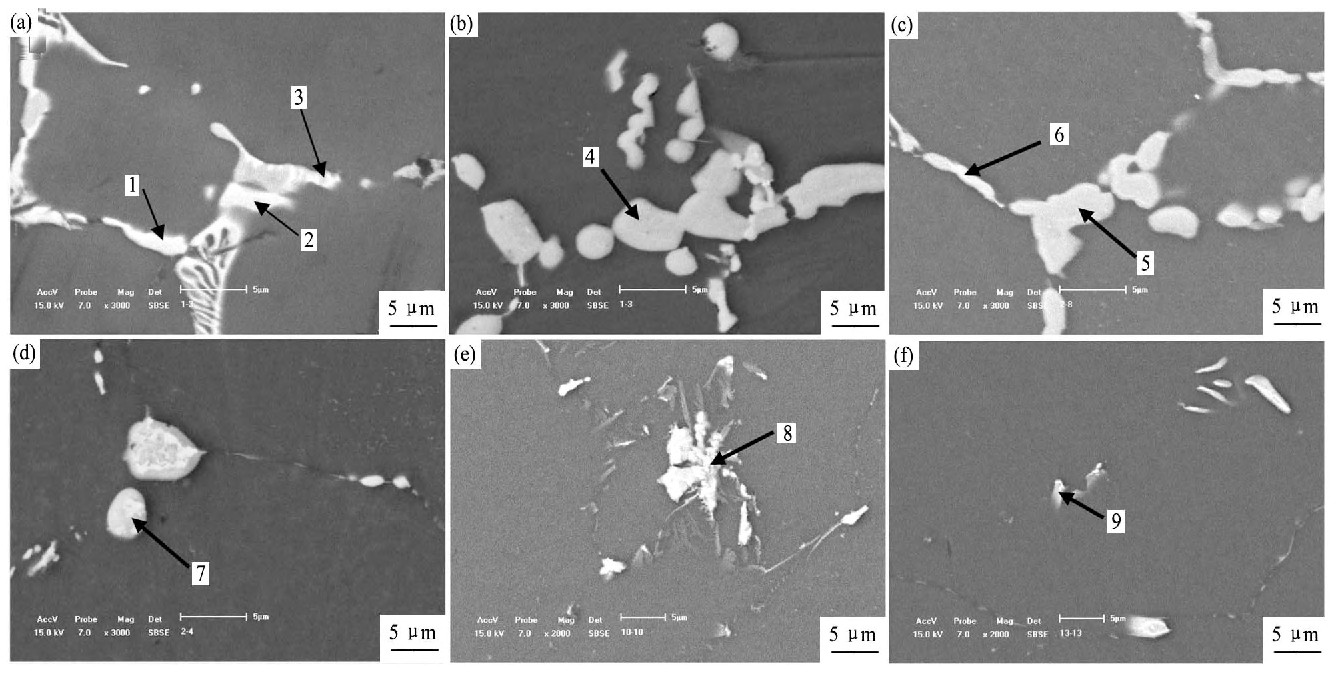
图4 7050铝合金组织高倍照片Fig.4 SEM images of as-cast and homogenized 7050 aluminum alloys
(a) As-cast; (b) 465℃/24 h; (c) 465℃/48 h; (d) 465℃/48 h+485℃/1 h; (e) 465℃/48 h+485℃/24 h; (f) 465℃/48 h+485℃/24 h+500℃/11 h
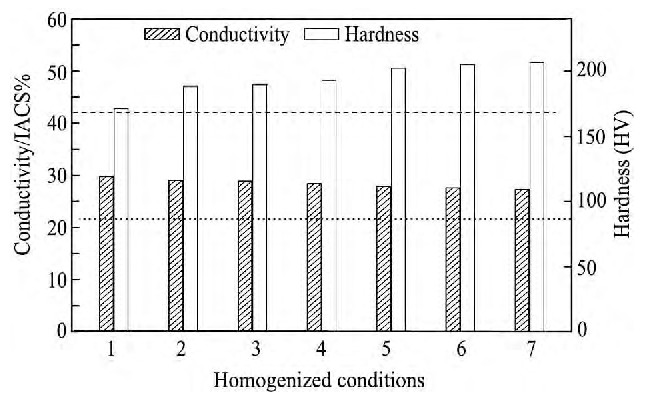
图5 不同均匀化条件后的硬度和电导率Fig.5Conductivity and hardness of alloys with different ho-mogenized conditions
1-465℃/2 h;2-465℃/24 h;3-465℃/48 h;4-465℃/48 h+485℃/1 h;5-465℃/48 h+485℃/13 h;6-465℃/48 h+485℃/24 h;7-465℃/48 h+485℃/24 h+500℃/11 h
3 结论
1.7050铝合金的铸锭组织经465℃均匀化48h后, T (Al Zn Mg Cu) 相消失, S相发生断续化和球化, 呈链状分布在晶界处。经465℃×48 h+485℃×13 h双级均匀化后, S (Al2Cu Mg) 相全部溶于基体。经465℃×48 h+485℃×24 h+500℃×11 h三级均匀化后, 只残留极少量孤立的Al7Cu2Fe相, 合金没有发生过烧, Al7Cu2Fe相在均匀化过程中基本保持不变。
2.7050铝合金经465℃均匀化48 h后, 电导率为28.9 IACS%, 硬度为HV190;经465℃×48 h+485℃×24 h+500℃×11 h三级均匀化后, 电导率和硬度趋于稳定, 分别为27.3 IACS%和HV206.6。
参考文献
[1] Nakai M, Takehiko E.New aspects of development of high strength Al alloys for aerospace applications[J].Materials Science and Engineering A, 2002, 285:62.
[2] Tian W T.Mechanical properties of semi-solid thixoforging 7A04 alloy parts[J].Forging&Stamping Technology, 2012, 37 (4) :63. (田文彤.半固态触变模锻7A04合金的力学性能[J].锻压技术, 2012, 37 (4) :63.)
[3] Chen K H, Liu H W, Zhang Z, Li S, Todd R I.The improvement of constituent dissolution and mechanical properties of 7055 aluminum alloy by stepped heat treatments[J].Journal of Materials Processing Technology, 2003, 142:190.
[4] Wang H J, Xu J, Kang Y L, Tang M G, Zhang Z F.Study on inhomogeneous characteristics and optimize homogenization treatment parameter for large size DC ingots of Al-Zn-Mg-Cu alloys[J].Journal of Alloys and Compounds, 2014, 585:19.
[5] Mondal C, Mukhopadhyay A K.On the nature of T (Al2Mg3Zn3) and S (Al2CuMg) phases present in ascast and annealed 7055 aluminum alloy[J].Materials Science and Engineering A, 2005, 391:367.
[6] Rokhlin L L, Dobatkina T V, Bochvar N R, Lysova E V.Investigation of phase equilibria in alloys of the AlZn-Mg-Cu-Zr-Sc system[J].Journal of Alloys and Compounds, 2004, 367:10.
[7] Fan X G.Evolution of eutectic structures in Al-Zn-MgCu alloys during heat treatment[J].Transactions of Nonferrous Metals Society of China, 2006, 16:577.
[8] Liu X D, Zhang Y A, Li X W, Li Z H.Hot deformation behavior of B95очaluminum alloy[J].Chinese Journal of Rare Metals, 2012, 36 (5) :687. (刘显东, 张永安, 李锡武, 李志辉.B95оч铝合金的热变形行为研究[J].稀有金属, 2012, 36 (5) :687.)
[9] Duan Y B, Tang J, Zeng S M.Effect of interstage homogenizing treatment on homogenization degree and overburnt temperature of 7A04 alloy[J].Aluminium Fabrication, 2003, (3) :32. (段玉波, 唐剑, 曾苏民.阶段均匀化处理对7A04合金均匀化程度和过烧温度的影响[J].铝加工, 2003, (3) :32.)
[10] Sun Z Y, Feng Y B, Nie B, Li R F, Zhao G, Tian N.Study on high temperature homogenization of DC-cast2A12 aluminum alloy ingot produced with electrolytic aluminum melt[J].Light Alloy Fabrication Technology, 2012, 40 (8) :27. (孙振宇, 冯彦波, 聂波, 李瑞锋, 赵刚, 田妮.原铝液DC铸造2A12铝合金铸锭的高温均匀化研究[J].轻合金加工技术, 2012, 40 (8) :27.)
[11] He L Z, Li X H, Cui J Z.Effects of high magnetic field on the evolutions of constituent phases in 7085 aluminum alloy during homogenization[J].Materials Characterization, 2012, 71:19.
[12] Zhang X M.Effect of step-homogenization on microstructures and mechanical properties of 7055 aluminum alloy[J].Chinese Journal of Nonferrous Metals, 2012, 22 (8) :2154. (张新明.分级均匀化对7055铝合金组织和力学性能的影响[J].中国有色金属学报, 2012, 22 (8) :2154.)
[13] Deng Y, Yin Z M, Cong F G.Intermetallic phase evolution of 7050 aluminum alloy during homogenization[J].Intermetallics, 2012, 26:114.
[14] Jia P F, Cao Y H, Geng Y D, He L Z, Xiao N, Cui J Z.Studies on the microstructures and properties in phase transformation of homogenized 7050 alloy[J].Materials Science and Engineering A, 2014, 612:335
[15] He L Z, Li X H, Cui J Z.Effect of high magnetic field on phase transformation of 7055 Alloy during homogenization[J].Advanced Materials Research, 2011, 189-193:4472.